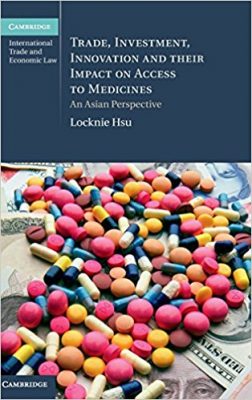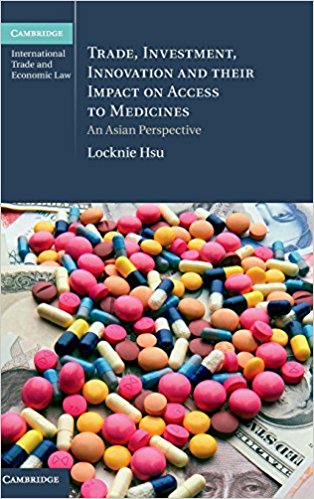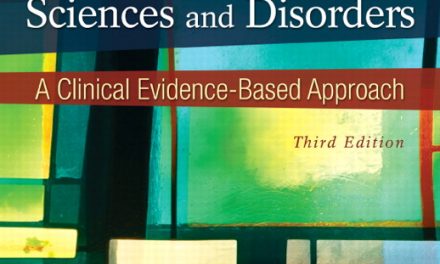 (This book is part of the Cambridge Series on International Trade and Economic Law)
(This book is part of the Cambridge Series on International Trade and Economic Law)
Author: Locknie Hsu
Publisher: Cambridge University Press – 459 pages
Book Review by: Sonu Chandiram
Generally, Asian countries, particularly developing ones, seek to keep prices of locally-developed and manufactured medicines low enough to be affordable to their average local consumer. On the other hand, pharmaceutical companies in developed countries, particularly in the United States and in Europe, need to ensure that prices of medicines they export to Asian countries are at levels that enable them to make a reasonable profit margin as a return on their investment and risk-taking, or to at least recoup their high cost of research, development and marketing.
Herein lies a basic conflict: developing countries need prices of medicines that are ‘affordable’ whereas Western pharmaceutical companies need prices that are ‘reasonable’ from a business perspective, seeking to make a profit when and where they can, or at least not lose money.
In addition, medicine makers in the West prevent ‘copying’ of their medicines by registering patents of their formulations, so that they have legal protection against companies and individuals who would otherwise sell copied medicines at prices much lower than theirs. In addition, they seek patents that are good for many years, so that they continue to derive revenues and profits for long periods of time.
Once patents expire, typically drug makers, both in Western and Eastern countries, begin marketing and selling drugs made from formulas developed by the original manufacturer. These products are termed ‘generic drugs’ and sold in large volumes, and some of those in high demand generate vast amounts of money because of their much lower prices.
In this 2016 book, Locknie Hsu, a Singapore-based law professor and specialist in international trade and investment law, explores such conflicts and other related ones, and in the end, suggests legal and policy solutions to trade problems as part of “setting new directions” that will lead the participants to a path of harmonious relationships among themselves. She proposes steps to be taken to provide wide access to medicines from all over the world.
This process of exploration, analysis, discussion, and suggestive consensus is laid out in eight chapters of this book we list below to provide a broad book overview for you, the readers:
- Economic Integration, Asia and Medicines
- Access to Medicines, Innovation, and the Debate at the Multilateral Level
- Trade, Investment, and Medicine: The Existing Legal and Policy Construct
- Treaties in Asia: Embedded Risks and Lessons from Disputes Elsewhere
- The Importance of Exceptions and Flexibilities
- Innovation and Competition
- Setting New Directions: The Need for Innovative Legal and Policy Solutions
- What Next?
Locknie Hsu emphasizes the need for all nations, pharma firms and their partners and representatives to adhere to international trade and investment laws, respect intellectual property laws, promote healthy competition, propel innovation, and find solutions to public health problems.
She also defines in this important book, the key outstanding legal issues on free trade agreements and negotiations, and the pending disputes between investing companies and host countries that are members of the Association of Southeast Asian Nations (ASEAN)
A milestone WTO agreement was passed by its members in 1995 that dramatically changed the international trade landscape. We write about that below, but it is important to know the situation before that event.
Before 1995, many countries pretty much used their own discretion in interpreting the intellectual property (IP) rights of foreign pharmaceutical companies within their local markets. They often violated those rights in pursuit of profit. To give you a rough idea of how unprotected these firms were, in more than 40 countries, pharmaceutical inventions were non-patentable!
“With most pharmaceutical corporations located in developed countries, it was in the economic interest of developing countries to allow the generic drug market to flourish, thus keeping cost of pharmaceuticals low and helping to maintain adequate access to affordable medicine,’ writes Sundaresh Menon, the Chief Justice of the Supreme Court of Singapore, in his Foreword to this unique and insightful book.
Menon adds that developed countries were primarily motivated by their ‘opposite concern’ to enable their drug companies to not only open up markets in developing nations, but to also get ‘market exclusivity for breakthrough inventions’ and to prevent erosion of their profits with the emergence of lower-priced generic drugs.
Related to the IP rights matter is the rights of patients. Those who used those medicines and had adverse effects had almost zero protection, and no recourse to take legal action against drug makers.
In 1995, the World Trade Organization adopted a significant agreement for the protection on intellectual property rights on a global scale. Entitled TRIPS, short for Trade-Related Aspects of Intellectual Property Rights, this international accord, among other things, did the following
- Set minimum standards for the protection of intellectual property rights
- Struck a balance of sorts between the pharmaceutical industry’s interest in recouping the hefty research and development costs associated with drug interventions, and the health priorities of the developing countries seeking affordable medicine
- Incorporated various exceptions and ambiguities
- Began the quest to harmonize international IP law and to establish new and higher patent protection benchmarks for pharmaceuticals.
This is highly informative book on international trade law and rights, particularly as it pertains to medicines, and the author – Professor Locknie Hsu – has done an outstanding job in presenting the pros and cons of each pertinent issue and the viewpoints of different parties involved in this area. It is highly valuable contribution to the advancement of knowledge and understanding of the global pharmaceutical market and the roles of the various actors in it.
Author:
Locknie Hsu is a Professor of Law at Singapore Management University, where she has been the recipient of five teaching awards. Previously she worked at the Singapore Ministry of Trade and Industry as a legal consultant on trade issues including those arising under the World Trade Organization (WTO) and free trade agreement issues.
She received her legal training from the National University of Singapore and Harvard University and is a member of the Singapore Bar. She is currently Chair of its Trade and Investment Group and s member of the Working Group on Harmonization of Commercial Laws of the ASEAN Law Association.
She is co-rapporteur of the Committee on Sustainable Development and the Green Economy in International Trade Law at the International Law Association. She is also a member of the editorial board of the Journal of World Investment and Trade.







